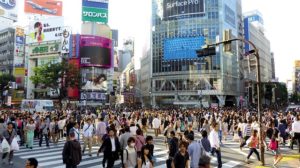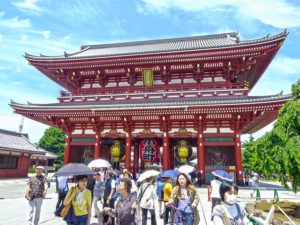What is Omiyage? It is Japanese Gift Giving Culture!

Most of you may buy souvenirs when you take a trip away from home, so do the Japanese. However, what you call “souvenir” is not equal to what Japanese people call “souvenir”- It's "Omiyage"(お土産)in Japanese.
So, what is “Omiyage” and what makes it a distinctive aspect of Japanese culture?
What are the differences between souvenir and omiyage?
Let's learn Japanese curious "omiyage culture" and see best omiyage ideas from popular sightseeing areas- Tokyo, Osaka, Kyoto, Hokkaido, and Fukuoka.
What is the definition of omiyage?

As those who have come to Japan may know, tourist shops are everywhere in Japan.
In the street, at hotels, airports, train stations… etc.
At those shops, you will find colorfully decorated boxes of sweets, food, and goods that are special to the region. All of those are “Omiyage.”
Omiyage is meant to buy for someone when you go back from your trip, and this “giving omiyage” culture is very important to maintain the relationships in Japan. Bringing back special products of the region to your family, friends, and colleagues means sharing your happy moments of your trip, and shows that you were thinking about others while you were away.
Your friends, relatives, family, coworkers, or neighborhood expect you to bring back special products from where your trip - whether it be vacation or business trip - was taken place. So the first thing you should do when you come back home is to give omiyage to your family waiting at home, and when you for the first time appear at your office or school after your trip, you should show up with omiyage. Also, if you do the homestay in Japan, don’t forget to take omiyage for your host family when you leave home!
Here are the ideas of omiyage to bring to Japan.
If you are worried about how to give omiyage, this article will help you out.
What should you choose as omiyage?

Omiyage can be anything. If you buy omiyage for your workplace or classmates, it doesn’t have to be expensive, fancy gifts. Something edible, usually local sweets, will satisfy your peers. Tourist shops offer a large selection of shareable omiyage. They are mostly large portioned, and packaged one by one so that it is easy to share them with many people. If you buy omiyage for your close friends, keychains, shot glasses, accessories, pens, or pouches will be a good choice.
But, there is one thing you should keep in mind when you choose omiyage.
Omiyage should be something that represents the region. Apple-themed sweets from Aomori, Pear-themed sweets from Tottori, chicken-themed food or snacks from Aichi, and so forth.
What are the differences between omiyage and souvenir?

Usually, omiyage is translated as "souvenir", but that translation is misleading. “Souvenir” lacks the important aspect of omiyage.
When you say souvenir, you imagine it as what you buy for yourself to remember the trip, and it doesn’t include gifts you buy for others. Omiyage, on the contrary, is not meant to be kept for yourself but is meant to give to others. But omiyage is different from gift-giving, too. While gift-giving is for someone’s birthday or some other special occasions, omiyage-giving takes place every time you came back from the trip and is a part of maintaining relationships.
When did omiyage culture emerge in Japan?

There is not one specific history of omiyage, but the origin of omiyage is thought to be a custom related to sacred pilgrimages in Edo period (from the 1600s-the mid-1800s). Those who visited Shinto shrines or Buddhist temples brought back religious items like rice wine cups or charms as the evidence of having completed the pilgrimage. The protection granted to pilgrims was believed to transmitted to others whoever received the sacred religious items brought back from the trip. As more and more people traveled to shrines and temples, small shops selling products specific to the region began to fill the street on the way to shrines/temples. This is the beginning of omiyage.
Are you getting to the point?
Omiyage is neither a mere souvenir nor gifts but is kind of a mixture of those two. It is a product representing to the region that you buy for your family friends, co-workers when you return home.
Best Omiyage Ideas When You Travel to Japan

So, what are products “special” to the region?
The followings are the list of omiyage from popular sightseeing spots in Japan; Tokyo, Osaka, Kyoto, Hokkaido, and Fukuoka.
-Tokyo

Tokyo Banana (東京ばな奈)
Tokyo Banana is a banana-shaped fluffy cake filled with banana cream. Variations in flavor and patterns exist. In addition to normal banana flavor, there are honey banana, almond milk, chocolate banana, maple banana, and many more flavors. You can find it almost everywhere in Tokyo, especially at Tokyo station, there are special stores dedicated to baking the sweets and selling them directly from the oven.
Edo Kiriko Glass (江戸切子)

Edo kiriko glass craft developed in Edo period, and its elaborate, beautiful patterns attract many visitors’ eyes, making it one of the popular omiyage in Tokyo. Edo kiriko glass is sold in the form of liquor glass, plate, leaf vase, necklace, and so on, but liquor glass is the most famous. Choose the best Japanese sake to give along with Edo kiriko liquor cups as a set of great omiyage!
-Osaka

Rikuro Ojisan’s Cheesecake(りくろうおじさんのチーズケーキ)
Rikuro Ojisan’s cheesecake, with shops always full of people, is something you have never come across in other parts of the world. Freshly baked and sold directly from the oven, it makes everyone walking down the street stop by. The surprisingly low price (only $6 for a whole cake), extremely fluffy texture, simple but rich delicacy make it worth a try.
Takoyaki Maker
Takoyaki is famous street food in Osaka, made with pancake-like mixture shaped into a bite-size ball shape, with octopus inside. Probably you have it at least once while you are in Osaka, and then think, “I wish I could take this food back to my home country.”
Then, get a Takoyaki maker! Inviting your family members and friends to your house and making takoyaki together will create a moment full of joy and wonderful experience.
-Kyoto

Japanese Green Tea
Uji district in Kyoto is famous for green tea, especially “Uji matcha (Uji green tea).” Uji is where the tea cultivation first took place in Japan and gained the reputation of high-quality green tea. Uji green tea can be enjoyed in various ways, not only tea but also cake, pudding, tiramisu, and other types of sweets.
Yatsuhashi (八つ橋)

Yatsuhashi is also a famous regional product of Kyoto. It is a thin, mochi-like Japanese sweet made from glutinous rice flour, sugar, and seasonings to add a flavor such as cinnamon, green tea, or black sesame. There are two types of yatsuhashi: nama(raw) yatsuhashi and baked yatsuhashi. Most of the time nama yatsuhashi is served with red bean paste at the center. Also, there is a wide range of flavor for nama yatsuhashi to choose from, which may make it difficult for you to pick the one that matches your preferences. So if you are perplexed with abundance selections of yatsuhashi, get the basic one, either cinnamon or green tea.
-Hokkaido

Shiroi Koibito (白い恋人)
Shiroi Koibito is langue de chat (cat tongue) cookies with either white chocolate or milk chocolate sandwiched, and is a standard omiyage of Hokkaido. Light color cookies and packages evoke you the image of Hokkaido with flaky snow and great nature.
Jagapokkuru (じゃがポックル)
Jagapokkuru is a potato snack from a Japanese snack maker Calbee but sold only in Hokkaido. It is made with potatoes shredded into french fries-like sizes, and then deep-fried. What is special about this snack is that all the ingredients are from Hokkaido. You can taste the natural taste of Hokkaido potatoes and slight flavor of Hokkaido salt. Why not buying “the Hokkaido” snack on your way home?
-Fukuoka

Mentaiko-flavored snacks

Mentaiko is a cod roe with spicy flavor and is a regional specialty of Fukuoka. While mentaiko is delicious by itself, its flavor is added to famous Japanese snacks such as jagariko, pretz, or potato chips as a limited edition to Fukuoka. You can find them at train stations, airports, and even convenience stores, so grab one of those snacks to enjoy Fukuoka until the last minute of your stay.
Hakata Torimon (博多通りもん)
Hakata torimon is a western-style sweet made of thin dough with white bean paste inside. Torimon indicates parade participants in the Hakata Dontaku festival taken place in Hakata, the central city of Fukuoka. The reputation of the festival made this delicacy the symbol of Hakata, thus became a must-buy omiyage. You can get it on the basement floor of department stores as well as train stations and airports.
Ready to get Omiyage back to your home?

Did you get what omiyage is?
Next time you visit Japan, make sure to grab omiyage to share your memories with people awaiting you back home!
See you next time!
